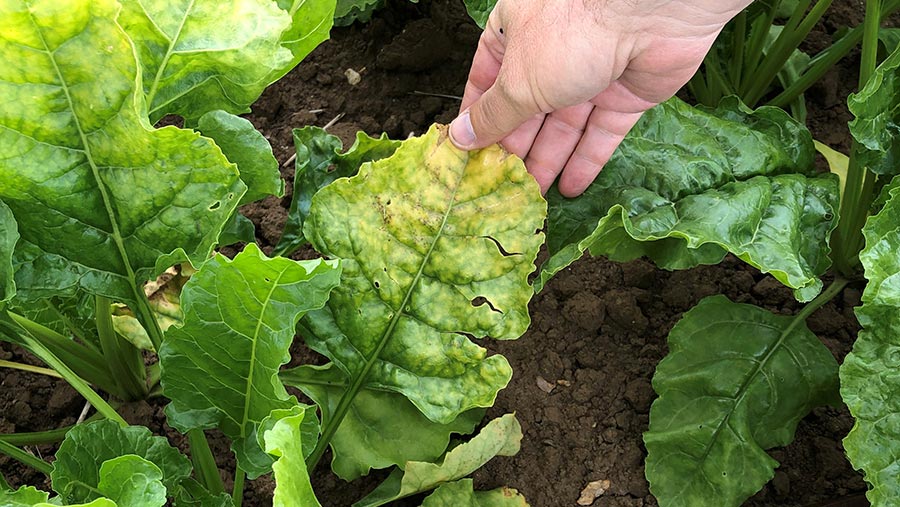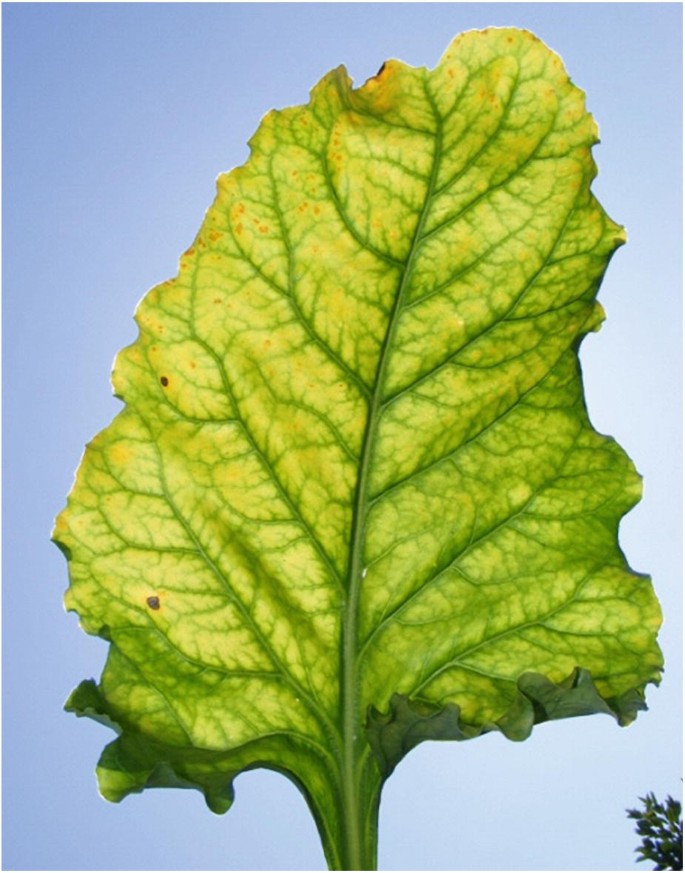
Beet Yellowness Virus
Beet Yellow Virus (Byv)
Pathogen:
Virus
Type:
Risk:
HIGH
Virus
Remolacha de mesa


WHO CAUSES IT?
Beet Yellow Virus (BYV) is a pathogen that primarily affects beets, causing a disease known as beet yellowness virus. This virus belongs to the Closterovirus genus, within the Closteroviridae family. BYV is a positive-sense single-stranded RNA virus. The BYV cycle begins when a vector, usually an aphid, feeds on the sap of an infected plant. Aphids acquire the virus and transmit it to new plants during their feeding. Once inside the plant, BYV replicates in phloem cells, interfering with nutrient transport and causing the characteristic symptoms of the disease. Virus replication and spread through the phloem are facilitated by proteins encoded by the virus itself.
SYMPTOMS
The beet yellow virus affects beet plants, causing a series of symptoms that significantly decrease the quality and yield of the crop. The disease initially manifests itself with yellowing of the leaves, which progressively spreads throughout the plant. As the infection progresses, the leaves may show reddening and upward curling, accompanied by a reduction in plant growth. This results in less root development, affecting both their size and quality.
- Yellowing of the leaves
- Redness of the leaves
- Upward curling of the leaves
- Reduction in plant growth
- Decrease in root size
- Loss of root quality

TEMPERATURE AND HUMIDITY
20°C - 25°C
60% - 80%
TRANSMISSION ROUTES
Aphids, infected plant sap, contaminated tools, infected seeds
Do you want to remove this pest? Choose how you want to treat it.
TREATMENTS
Chemical treatments
There are no effective treatments against viruses, the treatments are focused on combating the insect or vector carrying the virus (SEE AVAILABLE TREATMENTS AGAINST INSECTS)
Treatments allowed in organic farming
There are no effective treatments against viruses, the treatments are focused on combating the insect or vector carrying the virus (SEE AVAILABLE TREATMENTS AGAINST INSECTS)
Biological treatments
-
Recommendations
- Use beet varieties resistant to the yellowness virus to reduce the susceptibility of the crop.
- Implement integrated pest management that includes aphid control, using appropriate insecticides and biological strategies as natural enemies of aphids.
- Practice crop rotation with species that are not hosts of BYV to reduce the pressure of the disease in the field.
- Maintain adequate fertilization and irrigation management to reduce plant stress, which can reduce their susceptibility to the virus.
- Regularly monitor crops to detect the presence of aphids and disease symptoms early.
- Remove and destroy infected plants to prevent the spread of the virus to healthy plants.
- Disinfect agricultural tools and machinery used in infected fields to prevent the spread of the virus.
- Avoid overapplication of insecticides that can lead to resistance in aphids and reduce the effectiveness of chemical controls.
Sponsored link
Sponsored link
Sponsored link
Sponsored link
Sponsored link
Sponsored link
Effective against all types of fungi
TREATMENTS
Homemade remedies
There are no home treatments
Natural allies
Chemical treatments
There are no treatments for this disease. Treatments are directed at the insect vectors that transmit it. See insect treatments.
RECOMMENDATIONS
- Check the back of the leaves frequently, especially in dry weather.
- Spray water on the leaves to increase humidity and prevent them from settling.
- Keep plants healthy with good watering and adequate light.
- If you see cobwebs or damage, clean the leaves with a damp cloth or pressurized water.
- Use potassium soap or neem oil every few days until they disappear.
REPELLENT PLANTS
Rosemary, Dill, Coriander
EFFECTIVE PRODUCTS TO ELIMINATE THIS PEST
Sponsored link
Sponsored link
Sponsored link
Sponsored link
Sponsored link
Sponsored link
Effective against all types of fungi
*The recommended treatments are recommendations based on the authorities' databases and in no way replace the guidelines established by the legislation of each country.
*Products shown are recommendations and not our own products. As Amazon Associates, we earn revenue from purchases of recommended products.






















